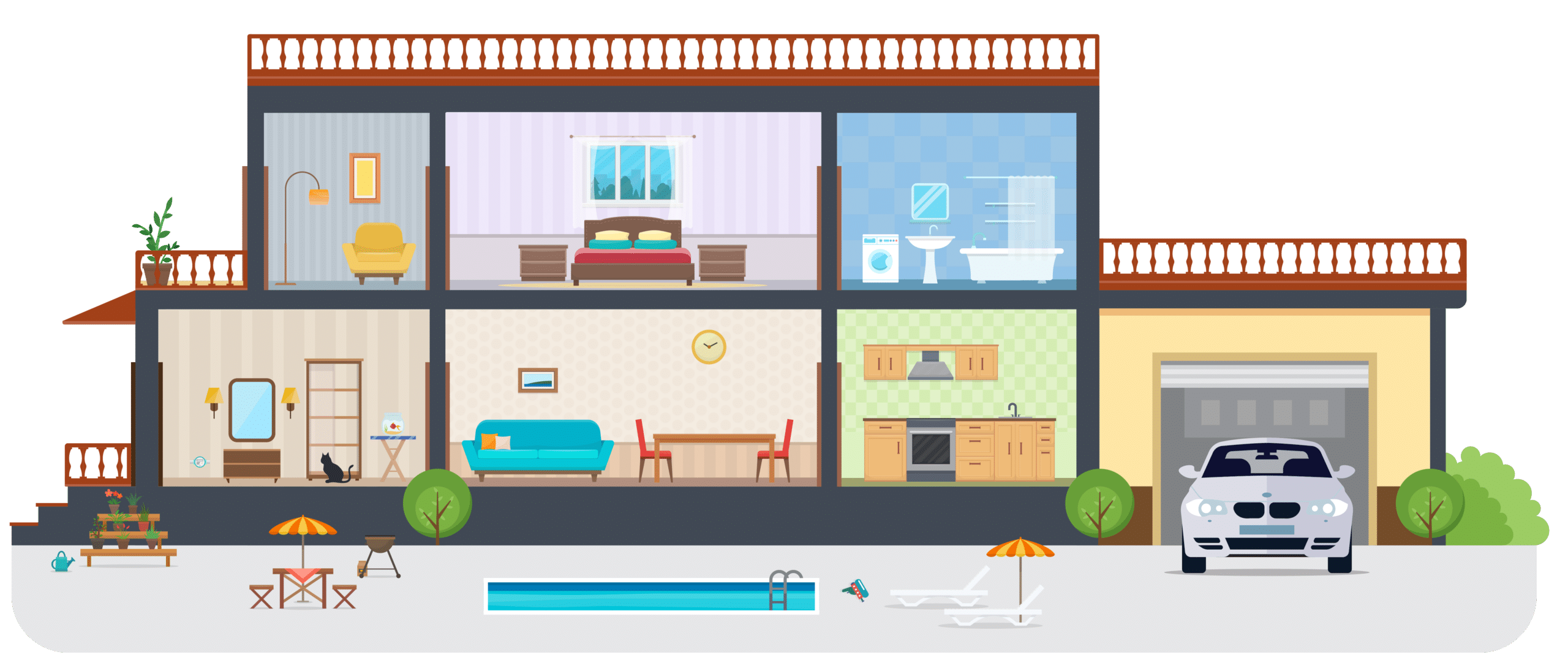Explore and find how you can reduce your water usage.
Select a category and find tips on how to conserve water

- Wash your pets outdoors, in an area of your yard/garden that needs water.
- When you give your pet fresh water, don’t throw the old water down the drain. Use it to water your trees or shrubs.
- Use a pool cover to help keep your pool clean, reduce chemical use and prevent water loss through evaporation.
- Make sure your swimming pools, fountains and ponds are equipped with recirculating pumps.
- If you have an automatic refilling device, check your pool periodically for leaks.
- Don’t overfill the pool. Lower water levels will reduce water loss due to splashing.

Other tips from this area
Report leaks in bathrooms and kitchens to facility managers or maintenance personnel.
Implement a water management plan for your facility, then educate employees on good water habits through newsletters and posters.
Water audit your facility to find out your recommended water use, then monitor your utility bills to gauge your monthly consumption.
Consider and compare water use when purchasing ice makers, dishwashers, reverse osmosis units, coolers and cleaning equipment.
Saving water on your landscape adds up quickly. Send the person in charge of your landscape to an irrigation workshop.
Consider turning your high-maintenance water feature/fountain into a low-maintenance art feature or planter.
Be sure your irrigation system is watering only the areas intended, with no water running onto walks, streets or down the gutter.
Inspect your landscape irrigation system regularly for leaks or broken sprinkler heads and adjust pressures to specification.
Give your landscape proper amounts of irrigation water. Determine water needs, water deeply but infrequently, and adjust to the season.
Put decorative fountains on timers and use only during work or daylight hours. Check for leaks if you have automatic refilling devices.
Wash company vehicles at commercial car washers that recycle water.
Wash company vehicles as needed rather than on a schedule. Stretch out the time in between washes.
When buying new appliances, consider those that offer cycle and load size adjustments. They are more water and energy efficient.


